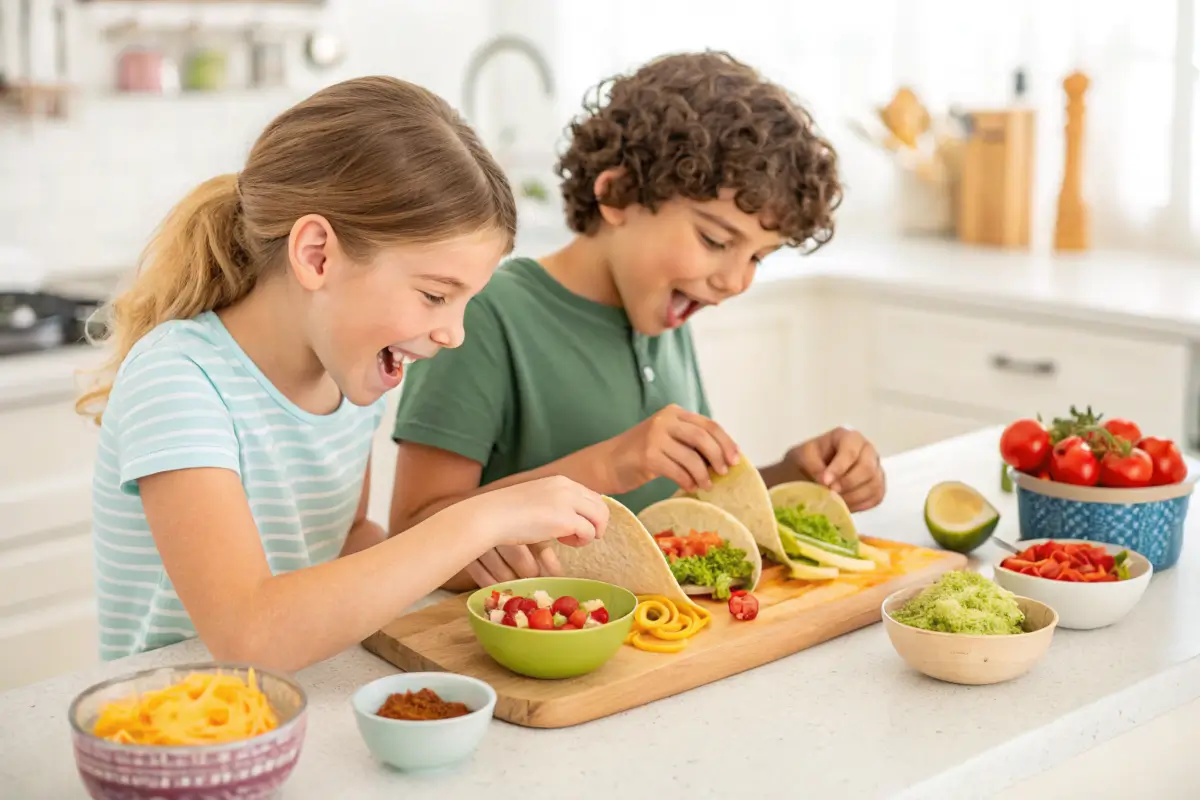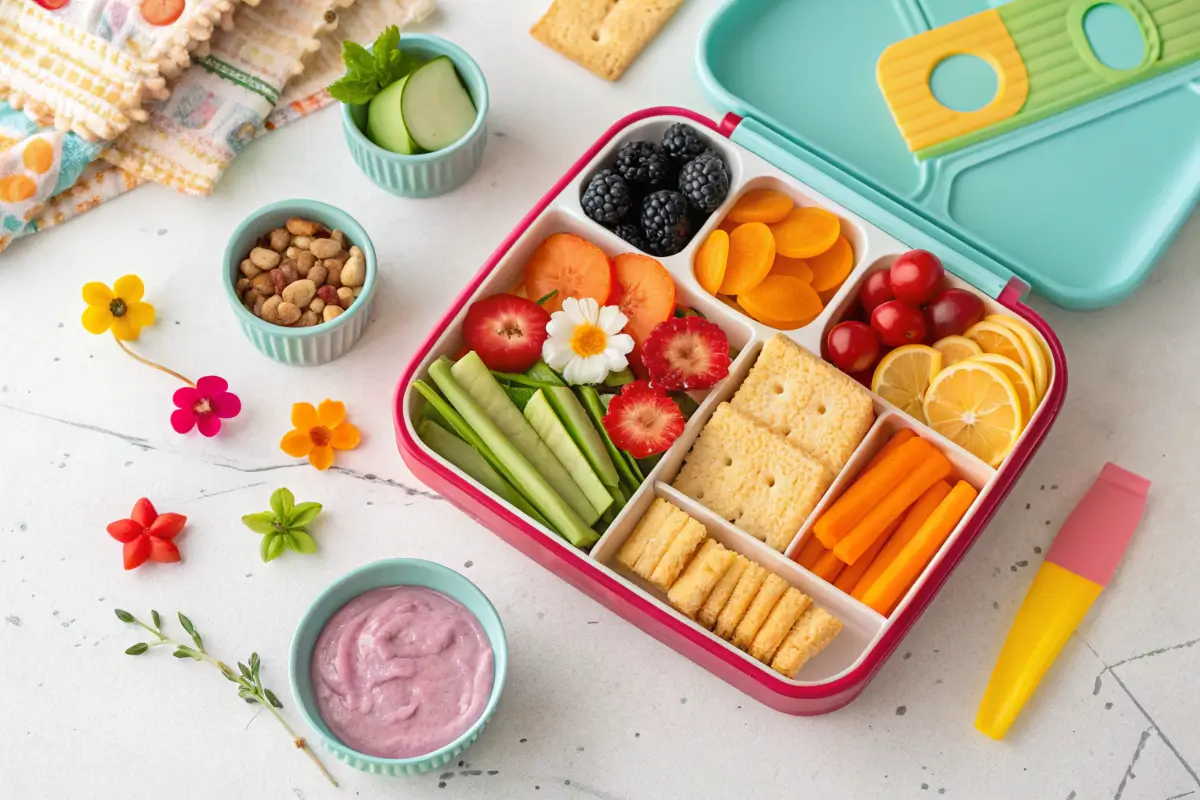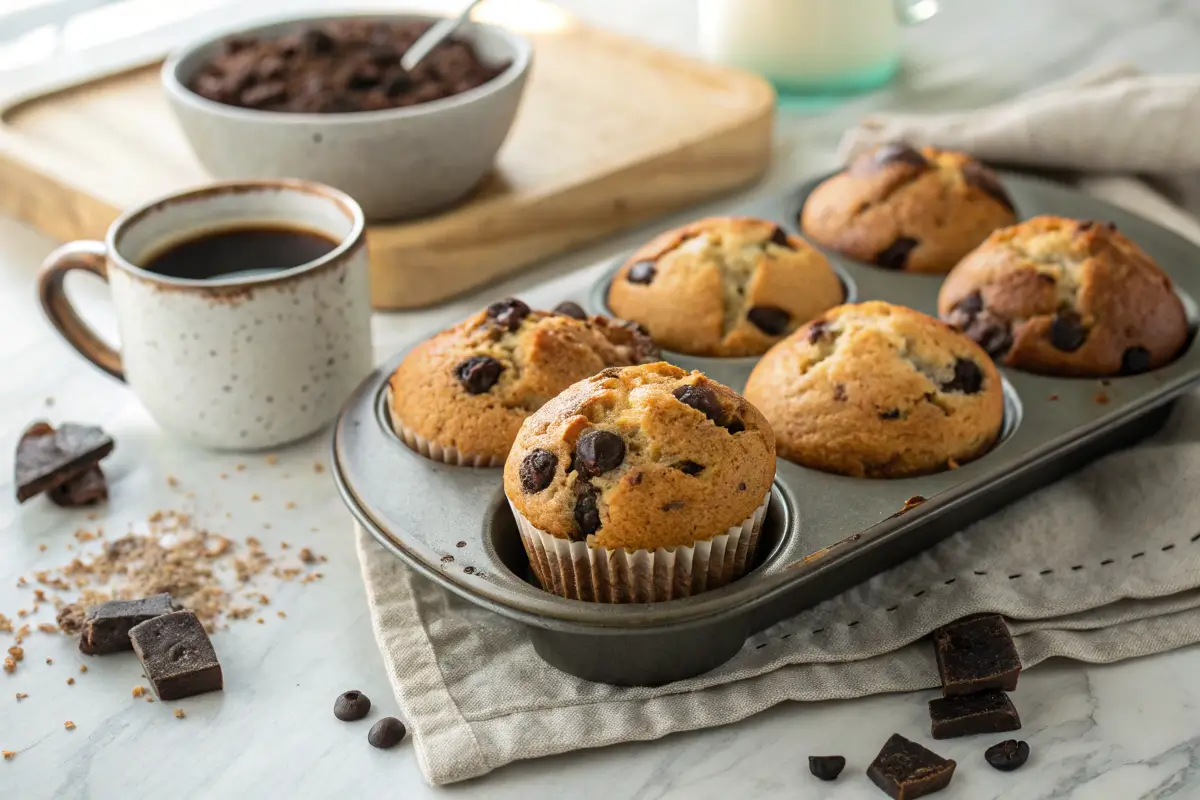Ever wonder what is visually appealing food for kids? You’re in the right spot! In this all-inclusive guide, we’ll focus on why colorful meals and exciting plating techniques can transform ordinary dishes into eye-catching meals for children. We’ll dig into methods for creating vibrant plates that tempt picky eaters and encourage healthy habits.
Along the way, you’ll get fresh ideas for creative kids’ food presentation, see how shapes and themes boost curiosity, and discover ways to involve your little ones in mealtime prep. Whether you’re a busy parent, caregiver, or simply curious about child-friendly meal design, get ready to explore a world of bold colors and fun textures that delight kids at the dinner table.
Why Visual Appeal Matters in Kids’ Nutrition

How Plating Influences Kids’ Eating Habits
Children are naturally drawn to brightness and variety, so using dynamic colors and playful shapes can make a huge impact. Sneaking in vibrant vegetables for children—like carrots, broccoli, and bell peppers—helps you offer a balanced meal that doesn’t look boring.
Give sandwiches cute cutouts or sculpt mashed potatoes into tiny mountains for an extra dash of whimsy. After all, youngsters are more likely to eat something that looks fun rather than plain.
Early Exposure to Eye-Catching Dishes
Sometimes, simply introducing kids to visually appealing kids’ meals early on can influence lifetime eating habits. By crafting meals with eye-catching elements—like fruit skewers shaped into stars—parents can spark their kids’ curiosity about new foods. Adding dips and sauces in colorful cups, for instance, encourages adventurous eating without overwhelming them.
Cultivating Positive Mealtime Attitudes
Offering visually stimulating plates can nurture a children’s mealtime creativity at a young age. When kids see a rainbow of colors carefully arranged, they might feel more excited (and less pressured) to take that first bite.
Boosting Curiosity Through Aesthetic Presentation
Let’s face it: kids love the unexpected. Whether it’s bright orange sweet potatoes topped with green peas or a whole-grain wrap cut into intriguing spirals, interactive food stations and thoughtful plating can motivate children to explore flavors they’d typically avoid. By investing energy into how food looks, parents and caregivers help children build a long-lasting positive relationship with mealtime.
Key Elements That Make Meals Visually Appealing for Kids
Vibrant Color Combinations for Picky Eaters
When asking “What is visually appealing food for kids?” one clear answer springs to mind: color! Many parents rely on colorful meals for picky eaters to spark interest. By mixing red cherry tomatoes with bright green edamame, you can add instant contrast.
Furthermore, using sunny yellows and deep purples—think corn kernels alongside eggplant—injects variety into a child-friendly meal design. Even a quick garnish of shredded carrots or sprinkles of fresh herbs can transform plain dishes into eye-catching meals.
Fun Shapes and Themes for Child-Friendly Foods
Kids adore novelty. Hence, cutting fresh fruit into hearts or stars brings a smile to their faces. Additionally, whole-grain tortillas rolled like sushi or mini pizza bites shaped like flowers can turn lunch into a fun adventure. This food artistry for young eaters goes beyond color and incorporates a playful vibe that encourages them to taste something new.
Seasonal or Holiday-Themed Meals
To sustain excitement, try themed plates for children. For instance, decorate meals with snowflake cutouts in winter or fresh blossoms in spring. Consequently, your little ones learn to associate each season with unique flavors.
Cartoon and Animal Inspirations
Moreover, drawing on popular cartoons or adorable animals can kick your presentation up a notch. By arranging fruit slices into a panda face or forming rice into a bunny shape, you elevate mealtime into a delightful event.
- Is Lunchly Mold Cheese Safe to Eat?
Discover the safety of Lunchly mold cheese in our detailed article here. - Best Way to Store Lunchly Mold Cheese
Learn the best storage methods for Lunchly mold cheese to keep it fresh here. - Did Lunchly Get Discontinued?
Find out if Lunchly has been discontinued and what it means for consumers here.
PHealthy Yet Eye-Catching Options for Children
Incorporating Fresh Fruits and Vegetables
Vibrant vegetables for children can be both nutritious and pretty. In fact, mixing juicy strawberries, crunchy cucumbers, and sweet bell peppers on a plate instantly looks inviting. Thus, a rainbow veggie platter with carrot sticks, broccoli florets, and cherry tomatoes can feel more like an art piece than a typical snack. Also, pairing these fresh items with a light yogurt dip or hummus can encourage kids to experiment. This engaging toddler food idea is simple to prep, yet it remains a powerful way to get children to enjoy healthy fare.
Using Natural Food Coloring
When you want to jazz up everyday meals without resorting to artificial dyes, consider vibrant, plant-based options. For example, boiled beet juice or puréed spinach can color homemade pasta dough, lending an enchanting twist to standard dinners. Moreover, blue butterfly pea flower powder can turn beverages into pastel treats that amuse tiny taste buds. Consequently, children feel extra excited about trying these colorful creations.
Emphasizing Nutrient-Rich Ingredients
Sometimes, a small tweak can turn basic dishes into exciting plating techniques for kids. For instance, swapping white rice for brown or multigrain variations presents a more earthy color. Meanwhile, topping pizzas with fresh basil and diced tomatoes adds health benefits and an appealing visual pop. This approach helps you keep balanced and colorful plates on the table.
Hiding Veggies in Sauces and Smoothies
If your kiddo resists produce, blend leafy greens or steamed cauliflower into sauces. Furthermore, toss spinach in a fruit smoothie, masked by sweet bananas or berries. In this manner, fun shapes in kids’ lunches and secret ingredients combine to make healthy yet playful meal concepts that truly answer “What is visually appealing food for kids?”
Simple Techniques to Make Food Look More Appetizing
Arranging Meals in Compartmentalized Trays
When assembling visually appealing kids’ meals, it often helps to organize the plate. By separating each food group into neat sections, parents can offer variety without overwhelming little eyes. Indeed, colorful trays encourage children to notice the contrast between bright fruits, crunchy veggies, and hearty proteins.
They also build a sense of excitement, since kids can see all the meal components at once. Moreover, compartmentalized trays can serve as easy portion guides, making it simpler to ensure balanced and eye-catching meals. Although these trays are designed for function, they certainly add playful charm.
Garnishing with Herbs and Edible Decorations: What Is Visually Appealing Food for Kids?
The question so many families ask is: What is visually appealing food for kids? Often, the answer lies in the kid-focused food styling details. Sprinkling fresh parsley or basil onto pasta, for instance, can turn a bland look into something mouthwatering. In addition, edible flowers or bright citrus zest can accent dips and desserts, transforming a simple plate into a child-friendly meal design that feels fancy. Furthermore, kids love interactive touches like colored sprinkles on yogurt, which can subtly expand their taste buds.
Using Molds and Cutters for Sandwiches
Another fun idea is shaping sandwiches with cookie cutters. By doing so, you instantly add whimsy to lunch. Whether hearts, stars, or dinosaurs, these shapes keep kids intrigued.
Layering and Stacking Foods for Visual Height
Finally, consider stacking or layering foods to create mini “towers.” You can place sliced cucumbers and cheese squares one on top of the other. As a result, the dish appears more dynamic, encouraging little ones to sample every bite.
Involving Kids in the Kitchen for Extra Visual Appeal
Letting Kids Choose Colors and Garnishes
Including children in meal prep can work wonders for engaging toddler food ideas. In fact, giving them the freedom to pick a color theme or garnish encourages ownership of the final dish. They might choose red peppers over carrots simply because the shade looks “cooler,” but they end up enjoying extra veggies. Besides, mixing and matching creates a sense of excitement that reverberates throughout mealtime.
Encouraging Creative “Do-It-Yourself” Plating
Kids truly flourish when allowed to personalize their plates. Let’s say you place bowls of fresh veggies and lean proteins on the counter. Then, your little chefs arrange items in patterns or form silly faces—anything that sparks joy. This fun and interactive mealtime method cuts down on mealtime power struggles.
Build-Your-Own Taco or Pizza Stations
Pizza or taco nights get an instant upgrade when kids design their own meal. They might spread sauce, sprinkle cheese, or add fruit toppings, all while learning about healthy kids’ meal ideas.
Personalized Bento Box Arrangements
Finally, bento boxes can be an ideal canvas for child-friendly meal design. By allowing kids to select compartments for fruit, sandwich slices, or crackers, you encourage creativity and a sense of control—all essential ingredients in building excitement around eating.
Turning Mealtime into a Fun Experience
The Power of Storytelling and Character-Themed Plates
Kids thrive on imagination. By weaving tales around their dinner, you transform ordinary items into a fantasy world. For instance, design a “jungle safari” plate using broccoli trees and animal-shaped nuggets. Meanwhile, a simple spaghetti dish can become a “spider’s web” with clever sauce drizzles.
This approach answers What is visually appealing food for kids? because each element sparks wonder. Besides, children become more interested in trying vibrant vegetables for children when those veggies help complete a story. Also, you can introduce different characters using fruit cutouts or cheese slices. By merging mealtime with play, parents spark a sense of adventure around the table.
Music, Ambience, and Presentation Effects
Good vibes go a long way in amplifying child-friendly meal design. Adding soft background music or lively tunes can shape a more welcoming environment. Moreover, dimming or brightening lights to suit a meal’s theme further boosts excitement. Such details remind kids that food is not just about taste but an entire sensory journey.
Using Decorative Plates and Utensils
Sometimes, a charming fork or a plate with cartoon prints adds extra thrill. Many parents find that a favorite superhero bowl nudges children toward eye-catching meals. Even subtle decoration works wonders in making them more receptive.
Serving Meals with Interactive Elements
When children can dip, pour, or sprinkle toppings themselves, they feel in control. Consider including mini sauce containers or small sides they can add. This interactive food station style encourages exploration and curiosity, keeping mealtime fun and fresh.
Tips for Managing Time and Effort While Keeping Meals Appealing
Meal Prepping for Busy Parents
Life often feels hectic. Still, prepping visually appealing kids’ meals in advance can be a lifesaver. For instance, cutting fruits and veggies the night before makes it easier to whip up quick lunches. You could also portion out proteins, grains, and condiments, so you’re ready to assemble fun shapes in kids’ lunches without hassle. Indeed, a little planning means more time to focus on kid-focused food styling.
Stocking Up on Essentials for Quick Creative Fixes
Furthermore, it helps to keep a stash of must-have items that instantly brighten a plate. Colorful picks, reusable silicone cups, and decorative toothpicks can jazz up even the simplest dish. By having these little extras on hand, you’ll be able to create eye-catching meals with minimal fuss.
Colorful Fruits and Veggies in the Freezer
Chopped bell peppers, corn kernels, and mixed berries stand ready for last-minute additions. When tossed into simple recipes, they add both color and nutrition. Consequently, you save time while still providing interactive food stations for the kids.
Ready-to-Use Sauces and Garnishes
Lastly, keeping bottled sauces or sprinkle mixes within reach can reduce stress. With a quick drizzle or a dash of confetti-like toppings, you’ll turn bland meals into something that truly embodies What is visually appealing food for kids?
Common Mistakes and How to Avoid Plate Overcrowding

Striking a Balance Between Creativity and Clutter
Parents sometimes overdo it when they want to create visually appealing kids’ meals. Indeed, piling on too many decorations can crowd the plate, leaving children unsure where to begin. Consequently, it’s important to balance playful touches with open space.
If the dish is swimming in toppings or garnishes, kids might lose track of the actual food. So, limit the number of colors and shapes to maintain clarity. After all, the goal is to foster curiosity, not confusion. By placing each element deliberately, you’ll achieve a harmonious blend of child-friendly meal design and practicality.
Highlights vs. Distractions in Food Presentation
Even the most vibrant vegetables for children can seem overwhelming if you cram in everything at once. Using a small handful of accent pieces—like a drizzle of sauce or a sprinkle of seeds—can help direct a child’s focus without creating chaos. Additionally, consider how each element complements both the flavors and the visuals.
Using Contrast to Enhance Visual Interest
Sometimes, something simple like pairing bright carrots with light-colored rice injects intrigue. Similarly, adding pops of color in strategic areas can beckon little ones to try new items. This approach answers the question, “What is visually appealing food for kids?”
Minimizing Confusion for Younger Kids
Keep an eye on portion sizes for toddlers or preschoolers. Placing each food in its own spot, or limiting the shapes and toppings, can prevent overstimulation. A tidy plate keeps them focused, encouraging a positive mealtime experience.
Minor Tweaks vs. Major Overhauls in Kid-Friendly Food Presentation
When a Simple “Spot Fix” Is Enough
Sometimes, small enhancements fix bigger problems in kid-focused food styling. If your sandwich looks plain, cutting it into a heart or dinosaur shape might do the trick. Indeed, a quick flourish such as adding a colorful fruit garnish could rescue a lackluster layout. In many cases, little touches deliver exactly what’s missing from an otherwise decent spread. Why spend hours revamping the entire concept when a dash of creativity solves the issue? After all, visually appealing kids’ meals don’t usually demand a massive time investment—just a bit of playful thought.
When a Complete Rethink Becomes Necessary
Nonetheless, there are moments when straightforward adjustments aren’t enough. Similar to coding projects, “the decision of whether to rewrite or not hinges on whether you have a ‘design defect’ or an ‘implementation defect.’” If your fundamental presentation idea consistently fails, a genuine overhaul might be in order. Maybe your child finds the colors, layout, or textures uninviting.
In such cases, explore new plating methods and shapes. Gather ideas from family, friends, or even online communities. This move helps you better answer What is visually appealing food for kids? By changing your overall approach, you can reignite excitement and encourage children to embrace healthy foods once more.
FAQs about What Is Visually Appealing Food for Kids?
Why Is Visually Appealing Food for Kids Important?
Children often eat with their eyes first. So, a colorful plate draws them in, sparking excitement and encouraging exploration. In many cases, creating eye-catching meals helps shape positive attitudes about food. Moreover, visually stimulating dishes can reduce dinnertime battles, making eating a fun experience rather than a chore.
How Do Colors Influence a Child’s Appetite?
Bright shades like yellow, orange, and green often signal freshness and sweetness, piquing children’s curiosity. Conversely, dull or monochromatic meals might look boring. By mixing different hues—from red peppers to purple cabbage—you guide their focus toward healthy options. Colors can also tap into their emotions, motivating them to taste and explore new foods.
What Are Simple Ways to Make Veggies Attractive to Kids?
Start by cutting veggies into small, easy-to-eat pieces. Then, arrange them in cheerful patterns. Pair broccoli florets with sweet cherry tomatoes or layer cucumber slices to form a flower shape. You might also offer dips like ranch or hummus. These simple tricks produce child-friendly meal design that encourages them to enjoy veggies.
Can Shaped Cutters Really Promote Healthier Eating Habits?
Absolutely! Shaped cutters bring an element of play into each bite. Whether you cut sandwiches into stars or cucumbers into hearts, these fun tweaks entice children to try different foods. Smooth shapes also make veggies feel like treats, boosting your child’s willingness to explore and taste new flavors.
How Do I Balance Fun Presentation and Nutrition?
Use moderate portions of sauces and garnishes so that the focus remains on wholesome foods. Emphasize fresh produce, lean proteins, and whole grains. Meanwhile, add small flourishes—like colorful sprinkles on fruit bowls—to enhance What is visually appealing food for kids? This way, you strike a balance between excitement and a nourishing meal.
Conclusion
Visually appealing food for kids relies on color, shape, creativity, and a willingness to involve children in the process. Utilizing kid-focused food styling can shift mealtime from a struggle to a positive bonding experience. Consistency in presentation builds excitement, but remember that small changes—like thoughtful garnishes and playful themes—often suffice.
If these tweaks fail to spark curiosity, a more significant overhaul might be needed, such as rethinking the entire plating method. Through patience, experimentation, and a dash of fun, parents can encourage children to discover new flavors, develop healthy eating habits, and embrace mealtime with open arms.
- What Are 7 Healthy Lunches?
Explore our list of 7 healthy lunches that are perfect for kids here. - What Meals Can I Make My 2-Year-Old?
Get creative meal ideas for your 2-year-old with our helpful guide here. - Toddler Lunch Ideas Without Meat
Check out these delicious toddler lunch ideas that are meat-free here. - Make My Toddler’s Lunch Visually Appealing
Discover tips on how to make your toddler’s lunch visually appealing and fun here.






